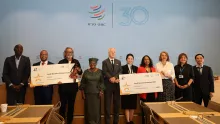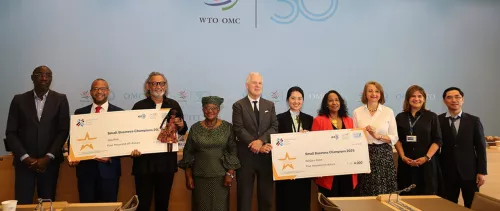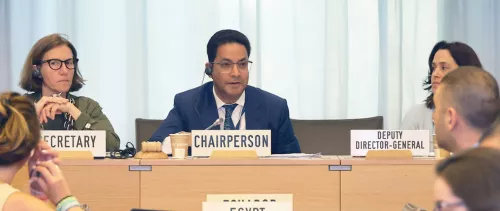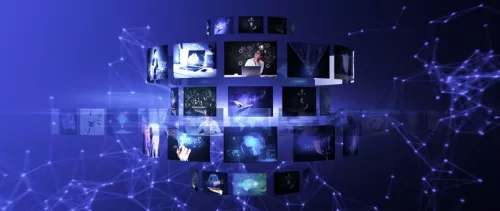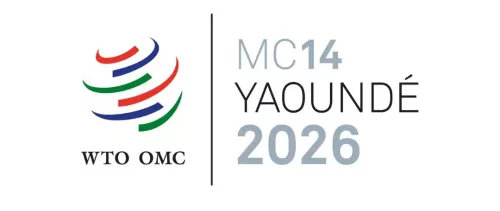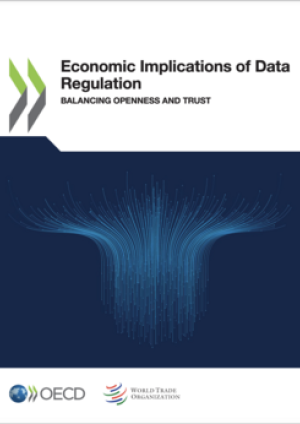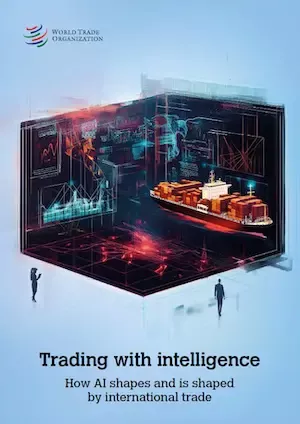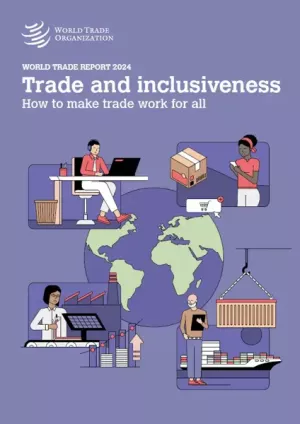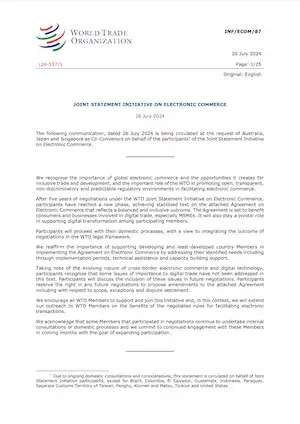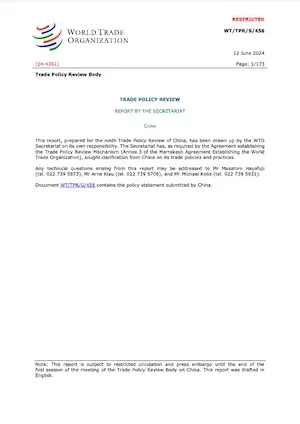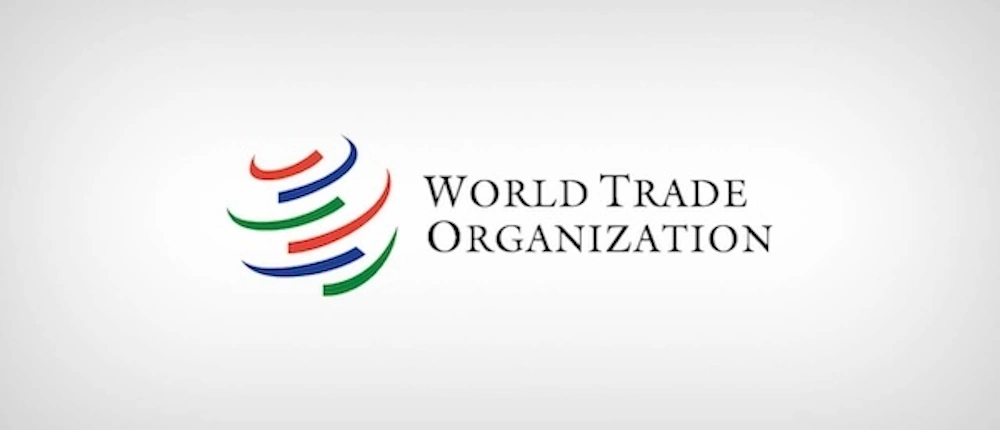
The World Trade Organization (WTO) is the only global international organization dealing with the rules of trade between nations. At its heart are the WTO agreements, negotiated and signed by the bulk of the world’s trading nations and ratified in their parliaments. The goal is to ensure that trade flows as smoothly, predictably and freely as possible.
The Work Programme on Electronic Commerce, adopted by the General Council in September 1998, tasks four WTO bodies with exploring the relationship between existing WTO agreements and e-commerce. It gives the General Council a central role of continuous review of the Programme, with responsibility for exploring cross-cutting issues and examining a provisional moratorium on customs duties on electronic transmissions. The overall objective is to examine all trade-related aspects of e-commerce and to give recommendations for further action.
Separate discussions are taking place among a group of WTO members under the Joint Statement Initiative on E-commerce. 91 WTO members are conducting negotiations on trade-related aspects of electronic commerce.
In the meantime, WTO members also agreed to continue their current practice of not imposing customs duties on electronic transmissions.
EXCLUSIVE INTERVIEW
Exclusive interview with Mr. Michael Roberts, Aid for Trade Coordinator in the WTO and eTrade for all focal point.
- Can you give us a bit of background on the Aid for Trade Initiative?
The Aid for Trade initiative was launched in 2005 at the Hong Kong Ministerial Conference. A Task Force subsequently operationalized the Initiative. The 2006 recommendations focused on measures to better articulate demand for development assistance to address trade-related infrastructure and supply side constraints by integrating these needs into national and regional economic planning frameworks.
The recommendations urged development partners to align with these frameworks and needs by better integrating trade into existing mechanisms. Emphasis was also placed on how to ensure that the demand and provision of Aid for Trade were aligned, with the Enhanced Integrated Framework a particular focus for dialogues with LDCs. A monitoring and evaluation mechanism was also established jointly with OECD, with periodic global reviews of Aid for Trade placed at the heart of this mechanism.
- What has been achieved since the launch of the Aid for Trade Initiative in 2005?
Aid for Trade helps developing economies and LDCs to build more resilient, inclusive and sustainable economies through the transformative power of trade. It promotes the integration of developing economies, especially LDCs, into the multilateral trading system and aims to galvanize support to build supply-side capacity and trade-related infrastructure in these economies. However, greater efforts are required to help developing economies and LDCs to benefit from emerging trade opportunities from digital technologies and the green transition.
Between 2006 and 2022, over 90 bilateral and multilateral donors contributed a cumulative total of US$ 648 billion of funding to promote the integration of developing economies and least- developed countries (LDCs) into the multilateral trading system, unleashing their export potential and strengthening local livelihoods.
Disbursements and commitments for Aid for Trade surged in 2022, surpassing pre- pandemic levels, reflecting a rebound from the disruptions brought by the COVID-19 pandemic. Disbursements reached an all- time high of US$ 51.1 billion in 2022 – a 14 per cent year-on-year increase in real terms. Commitments increased 31 per cent in 2022 to reach a peak of US$ 65 billion.
Africa and Asia command the largest share of Aid for Trade disbursements – jointly accounting for 70 per cent in 2022, albeit with divergent trends. In 2022, the share of Aid for Trade disbursements to LDCs was 28 per cent and worth US$ 14 billion.
Developing economies are increasingly prioritizing the expansion of the digital economy in their national development strategies: 81 per cent of both partner countries and donors reported it a priority. Aid for Trade disbursements focusing on information and communications technologies have increased by 31 per cent since 2020.
Digitalization not only facilitates more efficient trade operations but also underpins a broader transformation towards a more connected, innovative and competitive global economy. With regard to improving digital connectivity and e-commerce, 46 per cent of responses from partner countries indicated that Aid for Trade was having a measurable positive impact, and 84 per cent noted that it would require continued support. However, the persistent digital divide poses a risk to growth. Without equitable technology access, participation in the burgeoning digital economy will remain limited.
- What are the main highlights of the 2024 Aid for Trade at a Glance Publication?
Aid for Trade delivers economic benefits for all through investments in infrastructure, trade capacity and the export industries of the future.
Developing economies and development cooperation partners are committed to trade as a driver of economic growth, poverty reduction and sustainable development.
Renewed international commitments signal a revival in Aid for Trade.
Aid for Trade financing flows proved agile, resilient and largely aligned with partner country priorities.
Aid for Trade is helping bridge the infrastructure gap, foster connectivity and support clean energy transitions.
Agriculture continues to be vital for developing economies.
Digital connectivity and e-commerce emerge as a transformative force.
Trade facilitation remains a priority to improve trade efficiency and address some of the trade-related challenges of the digital and green transition.
Inclusivity in Aid for Trade is a priority.
Aid for Trade is increasingly expected to help finance climate change mitigation and adaptation.
Private finance mobilized through official interventions plays a growing role in financing trade-related needs.
Maintaining a focus on LDCs is essential.
New priorities in global development cooperation call for a flexible and responsive approach to Aid for Trade.
- It has been raised quite a few times during discussions that while the share of resources for trade have done up, the share of resources for the digital have gone down. What are your views about this?
A key role that the Global Review plays is to cast a spotlight on exactly this type of issue. By bringing transparency to the allocation and destination of aid-for-trade resources, the Global Review promoted debate on prioritization of needs and resources.
Important to recall though is that aid resources should be allocated on the basis of the priorities expressed by developing and in particular least-developed countries.
And here, all stakeholders that responded to the AfT monitoring and evaluation exercise agreed that future demand for Aid for Trade resources to address connectivity issues is likely to increase.
On 27 June, the Informal Working Group on Micro, Small and Medium-sized Enterprises (MSMEs) marked MSME Day, announcing two new Small Business Champions. At its meeting on 26 June, the Group continued discussions on implementing the 2020 MSME Package and strategies to prepare for the 14th Ministerial Conference, due to take place in March 2026 in Cameroon. Participants explored key topics, with a particular focus on supporting MSMEs in their digital trade transformation and sharing key takeaways from a recent session with the private sector on current trade challenges.
